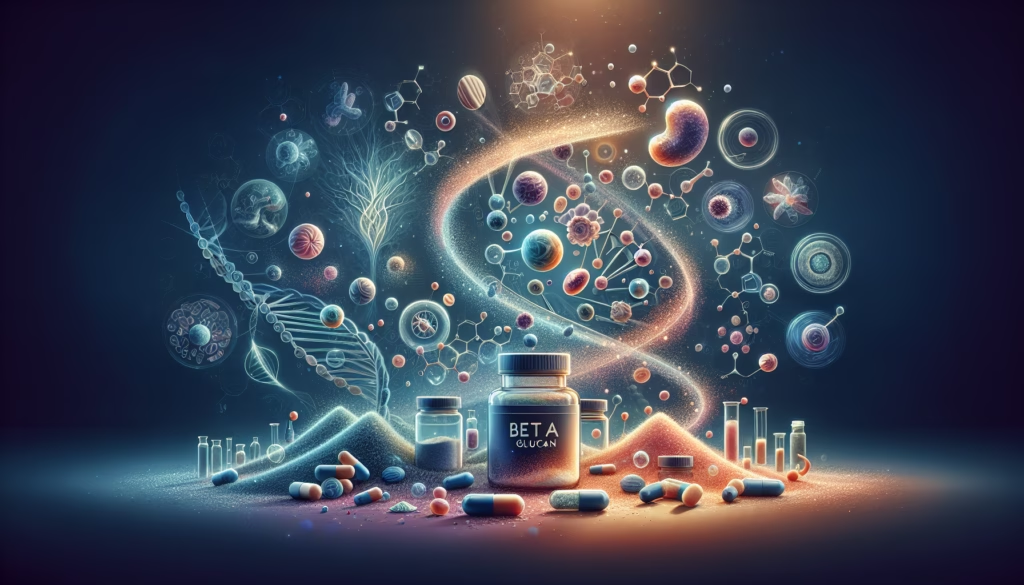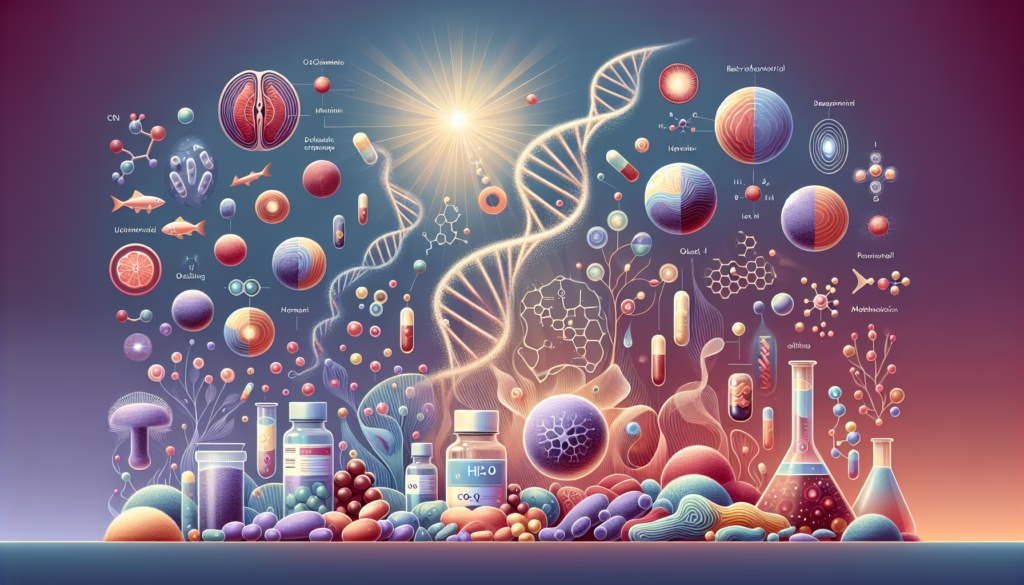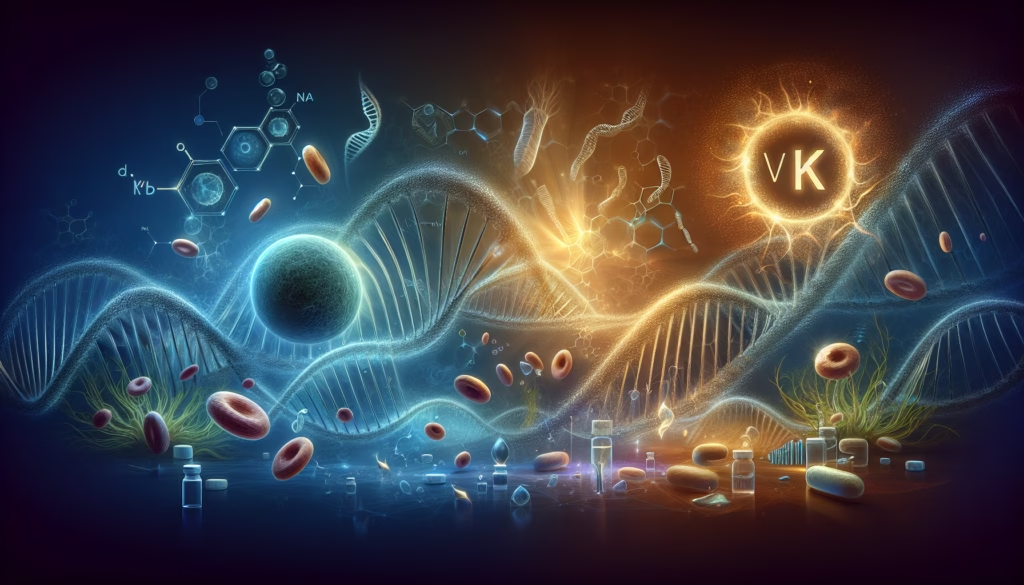
Beta Glucan
Discover the science-backed potential of beta glucan as an adjunct in cancer therapy. This post delves into the latest research
Click 
Lugol’s iodine, a solution containing molecular iodine (I₂) and potassium iodide (KI), has demonstrated significant anti-cancer properties in various studies. These effects are primarily attributed to its ability to inhibit cell proliferation, promote apoptosis, and modulate gene expression in cancer cells.
Antiproliferative Effects:
Lugol’s solution has been shown to reduce the growth of multiple cancer cell lines, including breast carcinoma (MCF-7), melanoma (IPC), lung carcinoma (A549), and bronchial carcinoma (H1299). Its effects are dose-dependent, with higher concentrations leading to greater inhibition of cell proliferation. For example, Lugol’s solution reduced MCF-7 cell growth by 40–60% at concentrations corresponding to 20–80 µM I₂14.
In breast cancer cell lines such as MCF-7, SKBR3, and MDA-MB-231, Lugol’s iodine significantly reduced cell proliferation rates, with effects being more pronounced at higher doses (10 µM and 20 µM)2.
Apoptosis Induction:
Molecular iodine in Lugol’s solution triggers mitochondrial-mediated apoptosis in cancer cells. This mechanism involves dissipating the mitochondrial membrane potential and generating iodolipids, which selectively induce apoptosis in cancer cells without harming normal tissues10.
Gene Expression Modulation:
Breast Cancer:
Lugol’s iodine has shown promise as an adjuvant therapy for oestrogen receptor-positive (ER+) breast cancers by interfering with oestrogen signalling pathways69.
Clinical trials suggest that iodine supplementation can prevent breast tumour progression and alleviate conditions such as fibrocystic breast disease, which is often linked to an increased risk of breast cancer47.
Other Cancers:
Surgical Oncology:
In head and neck cancer surgery, Lugol’s iodine has been used to reduce margin dysplasia during tumour resection, improving surgical outcomes5.
Iodine acts as both an antioxidant and a pro-apoptotic agent, protecting against DNA damage while selectively targeting cancer cells610.
Epidemiological data suggest a correlation between high dietary iodine intake and lower incidences of cancers such as breast and prostate cancers in populations like Japan710.
Lugol’s iodine holds significant potential for anti-cancer therapies due to its diverse mechanisms of action. Its ability to inhibit proliferation, induce apoptosis, and modulate gene expression makes it a promising candidate for further research in cancer treatment strategies.
Dosages of Lugol’s iodine for cancer treatment have been explored in various studies, but they are not yet standardised for clinical use. Below are the key findings on dosage recommendations:
Breast Cancer Cell Lines:
In vitro studies on MCF-7 breast cancer cells showed that Lugol’s solution (5% iodine/10% potassium iodide) at concentrations of 10 µM and 20 µM significantly reduced cell proliferation compared to lower concentrations like 1 µM, with p = 0.0018.
Higher concentrations, such as 5 mM iodine/iodide, were toxic to cells, reducing viability to less than 5%2.
Preliminary Clinical Study:
A clinical study involving 22 women with breast cancer reported that a daily dose of 5 mg of molecular iodine (I₂) improved outcomes compared to a placebo group6.
Rodent Studies:
Rodent models with DMBA-induced mammary cancers used a supplement containing 0.1% iodine/potassium iodide (0.05% each), which showed anti-estrogenic effects and reduced DNA damage9.
The National Institutes of Health (NIH) recommends a safe upper limit of 1,100 mcg/day for iodine intake. However, doses up to 4 mg per 100 lbs body weight of molecular iodine (I₂) have been reported as safe in experimental settings9.
Dosages higher than therapeutic levels can lead to toxicity, including metabolic acidosis and renal failure, as seen in cases of accidental overdose5.
Individualised dosing should be considered based on factors such as body weight, cancer type, and tolerance.
While doses like 5 mg/day of molecular iodine show promise for breast cancer treatment, further research is needed to establish standardised dosages for various cancers. Always consult a healthcare provider before initiating iodine therapy for cancer.
Breast Cancer, Colorectal Cancer, Leukemia, Lung Cancer, Prostate Cancer, Skin Cancer (including Melanoma)
Lugol’s iodine, while beneficial in certain medical contexts, can cause a range of side effects, particularly when used in excess or for prolonged periods. These side effects can be categorised into mild, moderate, and severe reactions:
Skin rash or acne4.
Swelling in the neck or throat (potential thyroid dysfunction)18.
Fatigue, weakness, or unusual tiredness4.
Tingling or numbness in hands or feet4.
Thyroid Dysfunction:
Cardiac and Renal Issues:
Severe Allergic Reactions:
Hives, swelling of the face or throat, difficulty breathing (anaphylaxis)8.
Gastrointestinal Corrosion:
Neurological Symptoms:
Circulatory Collapse:
Individuals with pre-existing thyroid conditions are more susceptible to adverse effects from iodine excess13.
Overdose scenarios may result from improper dosing or accidental ingestion of large quantities of Lugol’s solution (e.g., >100 mL)5.
While Lugol’s iodine is generally safe when used appropriately under medical supervision, excessive use can lead to serious health risks. Patients should follow prescribed dosages carefully and consult healthcare providers if side effects occur.
Several combination therapies involving Lugol’s iodine and other treatments have been explored for their anti-cancer potential.
Below is a summary of the combinations tested:
Effect: Enhanced antiproliferative and cytotoxic effects compared to Lugol’s solution or KI alone.
Cancer Types: Breast carcinoma (MCF-7), melanoma (IPC), lung carcinoma (A549), and bronchial carcinoma (H1299).
Results: Combination therapy reduced cell proliferation by 40–60% for Lugol’s solution and up to 90% for PVP-I (povidone-iodine) in dose-dependent studies16.
Effect: Improved immune response and enhanced apoptotic, antiangiogenic, and antiproliferative effects.
Cancer Types: Breast cancer.
Results: Increased Th1 polarisation, NK/CD8+ cell activity, and five-year disease-free survival rates when used as an adjuvant with chemotherapy2.
Effect: Improved radiotherapy outcomes by enhancing X-ray absorption in tumours.
Cancer Types: Brain metastases from breast cancer.
Results: INPs increased local radiotherapy dose in tumours, leading to long-term remissions in animal models. Survival rates improved significantly compared to radiotherapy alone6.
Effect: Used to assess surgical margins in head and neck cancer surgeries.
Cancer Types: Oral cavity and oropharynx squamous carcinoma.
Results: Reduced margin dysplasia from 32% to 4%, improving surgical outcomes8.
Effect: Modulated estrogenic metabolism genes while suppressing estrogenic-regulated genes.
Cancer Types: Oestrogen-positive (ER+) breast cancer.
Results: Suggested as a potential adjuvant therapy for luminal breast cancer6.
The combination of Lugol’s iodine with potassium iodide, chemotherapy, radiotherapy, or surgical techniques has shown promising results in enhancing anticancer effects across various pathways. These therapies target proliferation, apoptosis, immune modulation, and surgical precision, offering potential improvements in treatment outcomes. Further clinical trials are needed to validate these approaches.
Lugol’s iodine has shown both positive and negative effects on quality of life (QoL) depending on the duration of use, dosage, and individual health conditions. Below is a summary based on the available evidence:
Improvement in Hyperthyroid Symptoms:
Short-term use of Lugol’s iodine (10 days) significantly improved thyroid hormone concentrations and reduced hyperthyroid symptoms in patients with toxic nodular goiter (TNG). This was reflected in improved scores on the ThyPRO39se QoL questionnaire, specifically for hyperthyroid-related scales such as fatigue, mental clarity, and physical discomfort157.
Hormonal Balance:
Lugol’s iodine supports healthy thyroid function by regulating hormone production, which can positively affect metabolism, energy levels, and mental clarity3.
Safety in Short-Term Use:
Adverse Reactions:
Mild side effects include nausea, vomiting, metallic taste in the mouth, diarrhoea, and skin rash, which can temporarily affect QoL46.
Rare but severe side effects such as thyroiditis (painful or painless), hypothyroidism, hyperthyroidism, or cardiac toxicity can significantly impair QoL if Lugol’s iodine is used improperly or for prolonged periods28.
Prolonged Use Risks:
Short-Term Use: Generally improves QoL by alleviating hyperthyroid symptoms without significant adverse effects.
Prolonged Use: Risks outweigh benefits due to potential severe side effects like thyroid dysfunction and cardiac toxicity.
Patients should adhere to prescribed dosages and durations under medical supervision to maximise benefits while minimising risks.
We’ve done our best to include as much information as possible for this supplement.
If you have any other questions, please send us a message or join our Skool Group and ask our knowledgeable and friendly community.
Lugol’s Iodine is generally available over the counter as a dietary supplement. However, regulations may vary for higher concentrations, which might require a prescription. Its use should be under medical supervision, especially for indications other than its approved uses.
While some studies provide limited demographic data (e.g., median age and sex ratio), many fail to include comprehensive information about patient populations. This lack of detailed demographics limits the ability to generalise findings across broader groups.
The primary resistance mechanism identified involves superoxide dismutase (SOD) and catalase (CAT) enzymes, which counteract oxidative stress induced by Lugol’s iodine:
Candida glabrata:
Oxidative Stress Response:
Iodine interacts with polyunsaturated fatty acids in cell membranes, causing lipid peroxidation and structural damage1.
Resistance is partially attributed to cellular repair mechanisms that counteract iodine-induced membrane immobilisation and intracellular material loss1.
Resistance in pathogenic fungi (e.g., Candida) may arise from upregulated antioxidant defences.
Targeting SOD/CAT pathways could enhance Lugol’s iodine efficacy in antifungal or anticancer therapies1.
Conclusion: Antioxidant enzymes (SOD and CAT) are critical resistance factors against Lugol’s iodine, highlighting the need for combination therapies that inhibit these pathways to improve treatment outcomes1.
While some preclinical studies suggest potential mechanisms for Lugol’s Iodine in cancer, these findings are preliminary and do not guarantee clinical efficacy. These studies have primarily focused on iodine’s role in cellular processes and its potential anti-proliferative effects in certain cancer cell lines. However, the translation of these results to human clinical applications requires extensive further research through well-designed in vivo studies and eventually clinical trials.
As of the latest available information, there are no active registered clinical trials specifically investigating Lugol’s Iodine for cancer treatment. The lack of ongoing clinical trials highlights the need for more research in this area to establish its potential efficacy and safety profile in oncology.
Further investigation can be tracked at clinicaltrials.gov.
Genes Upregulated by Iodine:
CYP1A1, CYP1B1, AKR1C1: These genes are involved in oestrogen metabolism and were upregulated significantly in response to iodine treatment. This suggests that iodine interacts with oestrogen-responsive pathways, particularly in oestrogen receptor-positive (ER+) breast cancer14.
GADD45A and DDIT4: Genes associated with DNA repair and stress response were also upregulated, indicating iodine’s role in promoting genomic stability and apoptosis in cancer cells14.
PPARγ Pathway Genes: Iodolipids generated by iodine activate PPARγ, which regulates cell differentiation and apoptosis.
Genes Downregulated by Iodine:
Oestrogen-Responsive Elements (EREs):
Nine upregulated genes (e.g., GADD45A, CYP1B1) and five downregulated genes (e.g., TFF1, CCND1) contain putative EREs in their promoter regions. This highlights a genetic basis for iodine’s selective efficacy in hormone-sensitive cancers1.
DUOX2 Gene Mutations:
In congenital hypothyroidism, DUOX2 mutations affect iodide utilisation. Anecdotal evidence suggests that iodine supplementation can compensate for such mutations, indicating a potential role for genetic background in influencing iodine efficacy2.
The efficacy of Lugol’s iodine appears to be influenced by genetic markers related to oestrogen metabolism, DNA repair, and cell cycle regulation. These findings suggest that patients with specific genetic profiles (e.g., ER+ cancers or mutations affecting iodide metabolism) may benefit more from iodine-based therapies. Further research is needed to validate these markers in clinical settings.

Discover the science-backed potential of beta glucan as an adjunct in cancer therapy. This post delves into the latest research

Explore the emerging world of hydrogen gas (H₂), also known as Brown Gas, and its remarkable potential as an adjunct

Explore the latest scientific insights into vitamin K2 and its promising role in cancer therapy. In this comprehensive blog post,
Apoptosis, or programmed cell death, is a natural process where cells self-destruct when they are damaged or no longer needed. This is crucial for maintaining healthy tissues and preventing diseases like cancer.
Drugs and supplements that induce apoptosis help eliminate cancerous cells by triggering this self-destruct mechanism, ensuring that harmful cells are removed without damaging surrounding healthy tissue.
Understanding and harnessing apoptosis is vital in the fight against cancer, as it targets the root cause of the disease at the cellular level.
Cell proliferation is the process by which cells grow and divide to produce more cells. While this is essential for growth and healing, uncontrolled cell proliferation can lead to cancer.
Drugs and supplements that inhibit cell proliferation help prevent the rapid multiplication of cancerous cells, slowing down or stopping the progression of the disease.
By targeting the mechanisms that drive cell division, these treatments play a vital role in controlling and potentially eradicating cancer.
Cancer cells often hijack specific biological pathways to grow and spread. Drugs and supplements that target these pathways can disrupt the cancer cell’s ability to survive and multiply.
By focusing on the unique mechanisms that cancer cells use, these treatments can be more effective and cause fewer side effects compared to traditional therapies.
Targeting specific pathways is a key strategy in precision medicine, offering a tailored approach to combat cancer at its core.
Angiogenesis is the process by which new blood vessels form, supplying nutrients and oxygen to tissues. Cancer cells exploit this process to fuel their growth and spread.
Drugs and supplements that inhibit angiogenesis can effectively starve cancer cells by blocking the formation of these new blood vessels.
By cutting off the supply lines that tumors rely on, angiogenesis inhibitors play a crucial role in controlling and potentially shrinking cancerous growths.
Immunotherapy harnesses the power of the body’s immune system to combat cancer. By boosting or restoring the immune system’s natural ability to detect and destroy cancer cells, immunotherapy offers a targeted and effective approach to treatment.
Drugs and supplements that support immunotherapy can enhance the immune response, making it more efficient at identifying and attacking cancer cells.
This innovative approach not only helps in treating cancer but also reduces the risk of recurrence, providing a powerful tool in the fight against this disease.
Inflammation is the body’s natural response to injury or infection, but chronic inflammation can contribute to the development and progression of cancer.
Drugs and supplements with anti-inflammatory properties help reduce inflammation, thereby lowering the risk of cancer and other chronic diseases.
By targeting the inflammatory processes, these treatments can help maintain a healthier cellular environment and prevent the conditions that allow cancer to thrive.